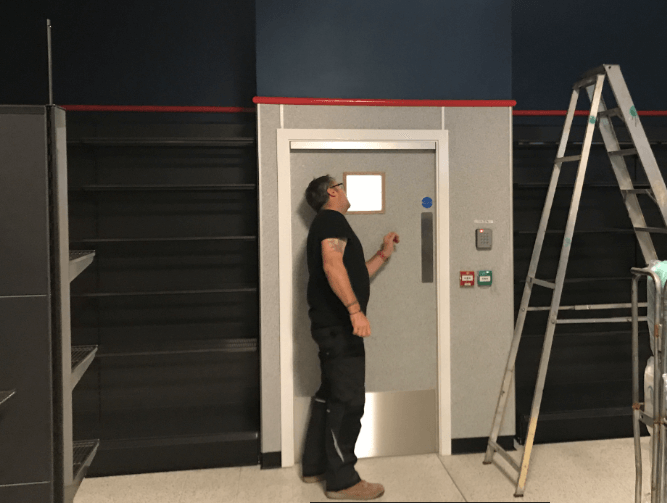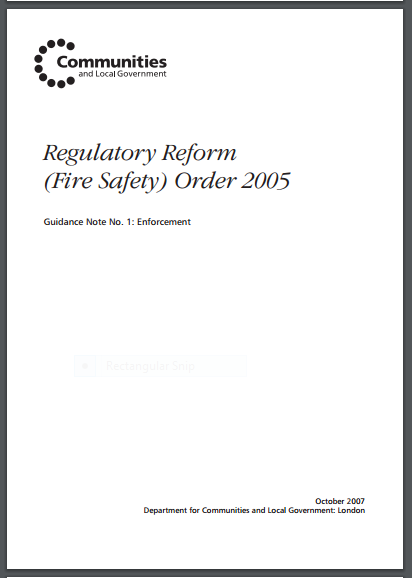
Regular maintenance, as well as being a legal requirement, is necessary to ensure fire doors remain fit for purpose.
In this month’s Fire Door Monthly blog we look at the importance of identifying which fire doors are necessary to your fire strategy.
Recent months have seen a marked upturn in business levels for Fire Door Inspectors and in earlier Fire Door Monthly blogs I have already described how most of the faults discovered stem from the initial installation work being carried out incorrectly.
Another increasingly common issue is that many building operators are unable to identify which doors at their buildings actually need to be fire doors. I want to stress in this month’s blog how important it is to clearly identify which doors actually need to be fire doors!
Compliance with fire safety regulations
Since the Grenfell Tower fire, building operators have paid more attention to fire safety at their buildings and are looking to make sure they comply with the requirements of the Fire Safety Order. This is clearly a step in the right direction because engaging the right ‘competent person’ to assist them in their duties under The Order will help to improve levels of fire safety and therefore help to protect people and property in the event of a fire.
However, in many cases the person engaging the Fire Door Inspector is unsure which doors at their premises actually need to be fire doors. There are often no floor plans and where there are plans they don’t always indicate locations of fire doors or fire compartmentation lines. Does this matter? Why not just count the doors that have the blue circular fire door signs or count the doors that have fire seals and inspect those?
The answer is yes. It does matter because once you have decided that the door is a fire door it is necessarily subject to periodic inspection and maintenance in accordance with the requirements of the Fire Safety Order. This of course means that resources are required to meet those requirements and those resources and the expense thus incurred is wasted if the door doesn’t actually need to provide fire and smoke resistance. At a small and simple building this issue could represent a waste of money that could be spent elsewhere but at a large and complex hospital estate for example the cost implications are huge.
So, what is a fire door and why is it?
To answer this question let’s look at the findings of two recent fire door inspection projects, one is an office and the other is a hospital.
1) The ground floor office space
The client has offices across central England and wanted to make sure their fire doors are fit for purpose. One office, in particular, consisted of just a ground floor area annexed to a multi-story office block and the inspector’s brief was to inspect all fire doors and escape doors at the office but with no plans available and no details about how many doors require inspection. The on-site inspection revealed that the office consists six partition walls and all internal doors as non-fire-rated.
The simple layout of the office, low risk, and mobility of the persons employed simply necessitated a strategy to escape in an emergency. So the fire door inspector enquired about recent fire evacuation drills and was told they were conducted only for the complete building rather than just the ground floor office. The point here is that the office workers here had no knowledge about the rest of the building because they only ever used their own ground floor annexe.
A fire risk assessment would have quickly and easily concluded that very little fire risk exists and by conducting periodic evacuation drills the employees would know how to raise the alarm at the building and escape safely in an emergency. The fire door inspector identified the emergency escape door and the office entrance doors (FD30s) and inspected them accordingly.
In the event, the fire door inspector helped his client by reporting that these are the only doors necessary in terms of fire safety but an earlier risk assessment should have provided the client with this information rather than engaging a fire door inspector for a full day. Thus additional costs could have been avoided.
2) The hospital
The client provided floor plans for a four-story building and the fire officer marked the plans with the doors to be inspected. The fire door inspector started work but it soon became apparent that the fire officer had marked the plans without visiting the building. Over the years many of the rooms had been subject to a change of use and no fire risk currently exists in those rooms. The fire door inspector reported this to his client and an agreement was reached about the fire doors that did actually require an inspection. The risk here is that the inspector could have carried on regardless and inspected doors unnecessarily.
These are just two instances, others include schools, hospitals and sleeping accommodations, where the client was not sufficiently aware that fire doors must be seen as part of an overall fire strategy. It is necessary to identify fire risks and an escape strategy, only then is it possible to decide which doors need to be fire-resisting. There is a danger that, if the fire door inspector you appoint is focused only on the doors and not on fire safety at the building as a whole, resources will be spent unnecessarily.

Periodic inspection and maintenance of fire doors and escape doors is a legal requirement so its important to identify them correctly and therefore avoid unnecessary expense.
Fire strategy
In summary, I would say that although fire doors are an essential element in fire safety and that their inspection by the right ‘competent person’ is also essential building managers, owners and operators must understand that a suitable up to date fire risk assessment is a legal requirement and is essential to implementing fire safety measures. Fire doors are covered under The Order as fire safety devices and it is important to identify where they are needed to protect lives and property.
I would urge all building operators to carry out periodic fire risk assessments that deal with the particular needs applicable to their building and the people that use it. Once that first step has been made, and made correctly, then the relevant ‘competent persons’ can be engaged to inspect and maintain the fire safety devices, including the fire doors.
If you have concerns about your fire doors and are unsure about where they might be necessary then I would advise you to discuss this with the fire door inspector before you engage them. Make sure you don’t waste resources. Fire doors do require periodic inspection and maintenance, as a legal requirement, so costs will have to be incurred but there’s no need to incur them unnecessarily.
